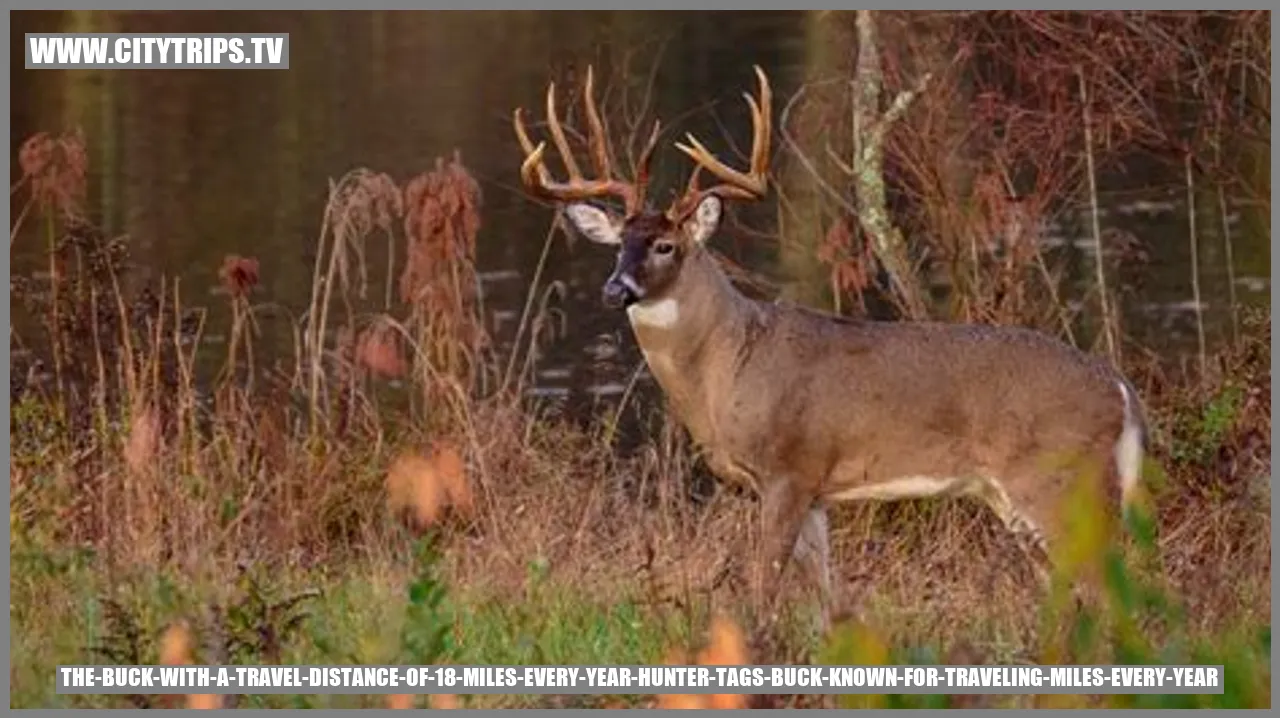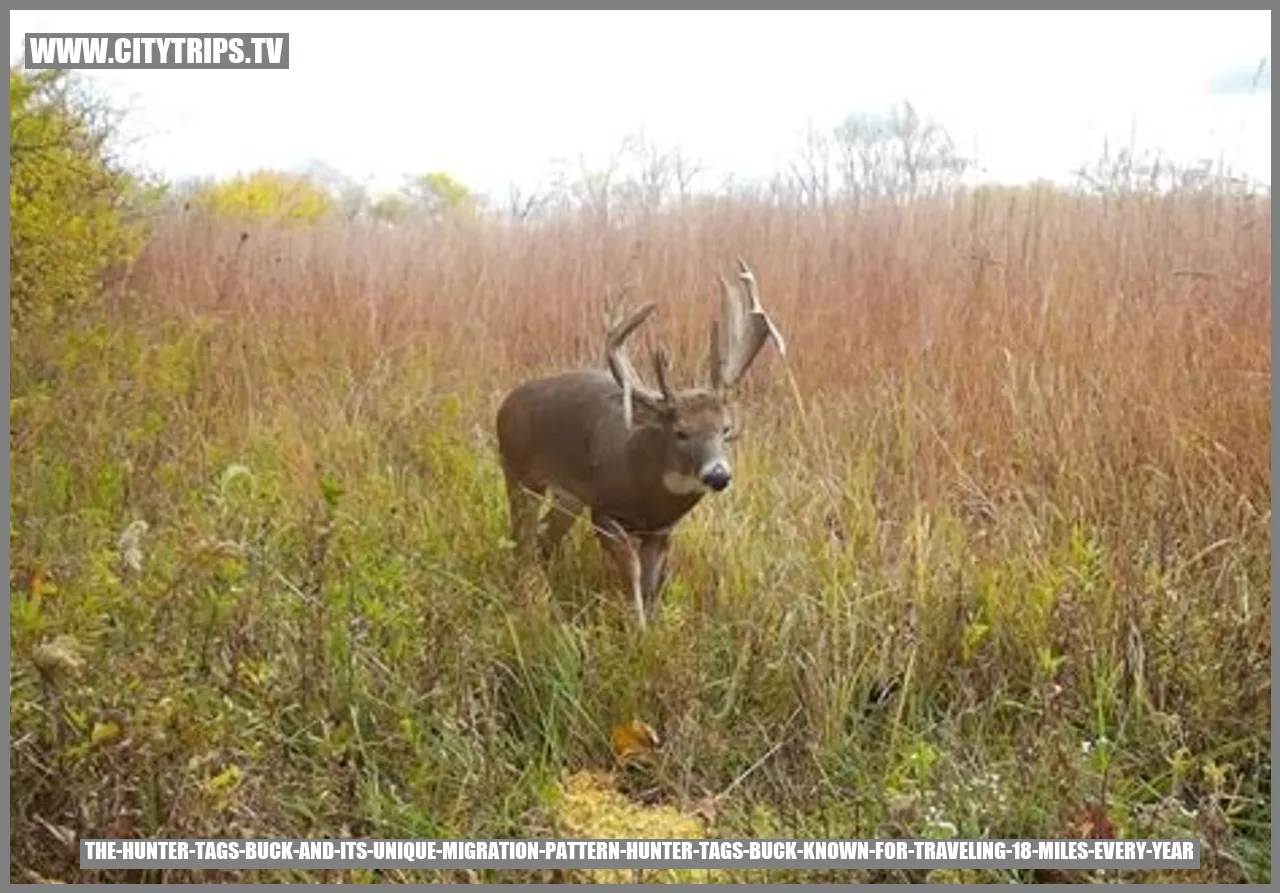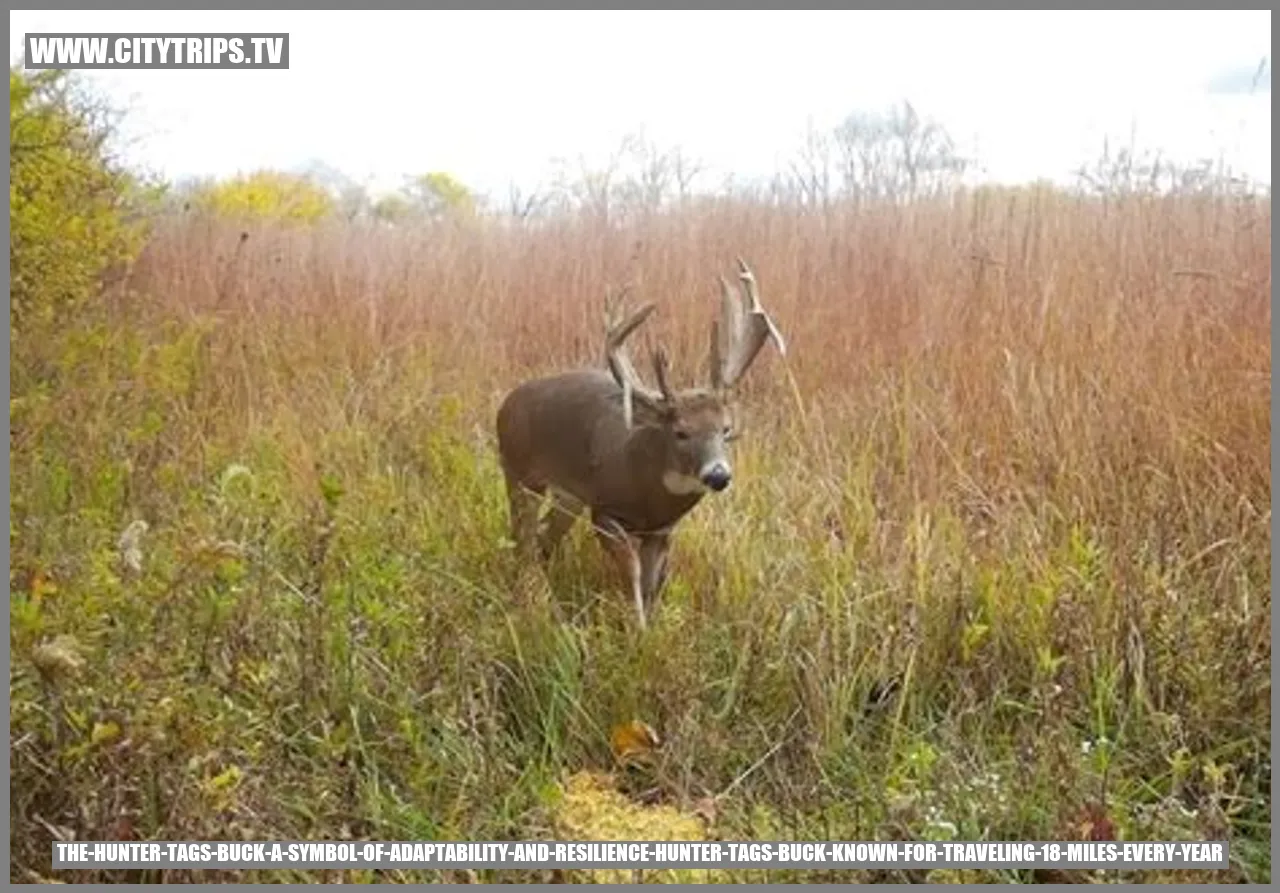The Travels of the hunter Tags Buck

The Incredible Journey of the hunter Tags Buck
Survival Tactics of the Hunter Tags Buck during its Annual Migration
In the wild, there exists an awe-inspiring creature known as the Hunter Tags Buck. Each year, it embarks on a remarkable odyssey of migration, showcasing its remarkable resilience and adaptability. One of the most striking elements of this journey is the buck’s incredible ability to traverse a distance of 18 miles.
The Impact of Environmental Factors on the Buck’s Migration Path
The migration path of the Hunter Tags Buck is greatly influenced by various environmental factors. These factors include the availability of food sources, prevailing weather conditions, and the presence of natural predators. The buck has developed ingenious strategies to overcome these challenges and successfully navigate through diverse landscapes towards its destination.
Conservation Initiatives to Safeguard the Hunter Tags Buck
Also read:
Huks New Gunwale Raingear Collection
Huks New Gunwale Collection: High Performance, Reasonable Price
Aware of the significance of preserving this extraordinary species, numerous conservation efforts are ongoing. Dedicated organizations work tirelessly to protect the habitats and ecosystems crucial for the buck during its annual migration. These conservation initiatives aim to ensure the buck’s survival and maintain a harmonious balance within the natural ecosystem.

Exploring the Fascinating Behavior of the Hunter Tags Buck
The Crucial Role of Instincts in Guiding the Buck’s Annual Migration
The extraordinary migration pattern of the Hunter Tags Buck has captured the attention of both scientists and hunting enthusiasts. This magnificent animal relies on its innate instincts to embark on an astonishing journey, covering vast distances every year.
Uncovering the Advantages of the Buck’s Long-Distance Travels
The annual migration of the Hunter Tags Buck serves multiple purposes. Firstly, it ensures access to rich food sources in diverse locations, allowing the buck to maintain its optimal health and vitality. Moreover, this extensive travel facilitates the mixing of genes, contributing to genetic diversity among bucks from different regions.
The Obstacles Confronted by the Buck During Its Remarkable Journey
However, the migration of the Hunter Tags Buck presents various challenges. The buck encounters treacherous terrains, harsh weather conditions, and potential threats from predators along its path. Nevertheless, through its resilience and adaptability, the buck overcomes these adversities, showcasing its exceptional survival skills.
In conclusion, delving into the behavior of the Hunter Tags Buck and its unique migration pattern provides valuable insights into the crucial role played by instincts in guiding this extraordinary creature. By appreciating the benefits and challenges involved in its long-distance travels, we gain a deeper appreciation for the endurance and tenacity of this remarkable species.

The Mighty Hunter Tags Buck: A Icon of Flexibility and Resilience
The Hunter Tags Buck’s Yearly Migration: A Boost to Survival Skills
The yearly migration of the Hunter Tags Buck, renowned for covering a staggering 18 miles per year, serves as a significant catalyst in sharpening its survival skills. During this venture, the buck faces a myriad of environmental hurdles, necessitating its adaptability and development of resilience to ensure long-term survival.
The Metamorphosis Within the Buck during Migration
As the Hunter Tags Buck embarks on its yearly migration, remarkable physiological transformations occur within its physique. These adaptations equip the buck with heightened endurance, augmented muscular strength, and fortified cardiovascular capabilities. Hence, these adjustments optimize the buck’s aptitude to conquer long distances, skillfully navigating diverse terrains and weather adversities.
The Astounding Navigation Capabilities of the Hunter Tags Buck
The Hunter Tags Buck showcases astounding navigation abilities during its migration. Through a combination of innate instincts like using celestial cues, sensing magnetic fields, and its remarkable olfactory senses, the buck effectively determines the correct direction to follow with precision. This inherent navigation system empowers the buck to stay on course, adeptly dodging potential threats and ensuring successful annual arrival to its destination.
Significance in Understanding Animal Migration Patterns
Investigating the migration patterns of the Hunter Tags Buck offers critical insights into the broader realm of animal migration. It highlights the paramount importance of flexibility, resilience, and navigation prowess in guaranteeing the success and survival of migratory species. The annual odyssey of the Buck serves as a poignant testament to the extraordinary abilities possessed by animals to overcome challenges and thrive ingeniously in their respective habitats.

Uncovering the Importance of Hunter Tags in Buck’s Migration
An Insight into the Ecological Significance of the Buck’s travel Path
The Buck’s annual migration covers an impressive distance of 18 miles. This remarkable journey holds great ecological value, granting the Buck access to vital resources such as sustenance and water, ultimately ensuring its survival. The precise trajectory it follows during migration plays a pivotal role in maintaining the delicate equilibrium of the ecosystem it inhabits.
The Intricate Dynamics Between the Buck and Diverse Species During Migration
While on its migration, the Buck engages in interactions with a myriad of species, creating a complex network of ecological relationships. It can be seen grazing alongside other herbivores, fostering opportunities for resource-sharing and symbiotic partnerships. Furthermore, predatory species often rely on the Buck’s migration for their own sustenance, hunting and feeding upon it during this vulnerable period.
The Influence of Environmental Transformations on the Buck’s Journey
Environmental transformations, such as deforestation, climate change, and human activities, exert a substantial impact on the Buck’s migratory patterns. These alterations can disrupt the natural travel routes, modify the accessibility of crucial resources, and ultimately endanger the Buck’s very existence. Comprehending these effects is paramount in implementing effective conservation measures to safeguard the integrity of its migration.
Preservation Tactics to Uphold the Buck’s Migration
In order to maintain the uninterrupted migration of the Buck and preserve its ecological significance, various conservation tactics must be employed. These may encompass establishing protected regions along its migratory path, reinstating and conserving critical habitats, advocating for sustainable land-use practices, and disseminating knowledge within local communities about the importance of preserving the Buck’s migration route. By actively implementing such strategies, we can contribute to the long-term preservation of not only the Buck itself but also the entire ecosystem that relies upon its presence.

Frequently Asked Questions: Understanding the Migration Patterns of Bucks
Q1: What triggers the migration of Bucks?
The migration of Bucks is stimulated by various factors, including changes in temperature, the availability of food, and their instinctual drive for procreation. As the seasons transition and winter draws near, Bucks feel compelled to relocate to areas with abundant food sources and suitable mating grounds. This innate behavior serves as a survival mechanism, allowing them to access better resources and ensure the long-term survival of their species.
Q2: How do Bucks navigate extensive distances during migration?
Despite undertaking long journeys, Bucks possess remarkable navigational abilities. They rely on a combination of internal factors, such as celestial cues and geomagnetic fields, as well as external cues like landmarks and scent marks. By utilizing their acute sensory capabilities, Bucks can successfully navigate through unfamiliar territories and return to their migratory paths year after year.
Q3: Are there any threats to Bucks during migration?
The migration of Bucks exposes them to various perils that they must overcome to reach their destinations safely. These threats include natural predators like wolves and mountain lions, as well as anthropogenic dangers such as hunting and the destruction of their habitats. The increasing encroachment of urbanization and habitat fragmentation further exacerbates the challenges faced by Bucks during their migration.
Q4: How can we track the migration patterns of Bucks?
Scientists and researchers employ various methods to track the migration patterns of Bucks. They utilize advanced tracking technologies like GPS collars and satellite telemetry to monitor their movements in real-time. Additionally, citizen science initiatives encourage individuals to report sightings of Bucks and share their observations, contributing to a broader understanding of their migration routes and behavior.
Q5: What insights can we gain from studying the migration of Bucks?
Studying the migration of Bucks offers invaluable insights into ecological dynamics, wildlife conservation, and the impacts of climate change. By understanding their migration patterns, scientists can identify crucial habitats and corridors that require prioritized conservation efforts. Furthermore, it allows us to recognize the interconnectedness of ecosystems and the necessity of safeguarding migratory routes for the overall well-being of not only Bucks but also other species dependent on similar pathways.
Q6: How can individuals contribute to the conservation of Bucks?
Individuals can contribute to the conservation of Bucks and their annual migration by supporting organizations dedicated to wildlife preservation. This can be accomplished through donations, volunteering for field studies, or advocating for the implementation of policies aimed at protecting their habitats. Raising awareness about the significance of migratory species and their preservation can also play a crucial role in ensuring the long-term survival of Bucks and the preservation of their associated ecosystems.
Q7: Are there other species exhibiting similar migration patterns?
Indeed, there are numerous other species that exhibit comparable migration patterns. Some examples include caribou, wildebeest, monarch butterflies, and various bird species such as Arctic terns and raptors. The study of the migrations of these species provides additional insights into the complexities involved in long-distance travel, adaptations to changing environments, and the essentiality of transcontinental conservation efforts.

